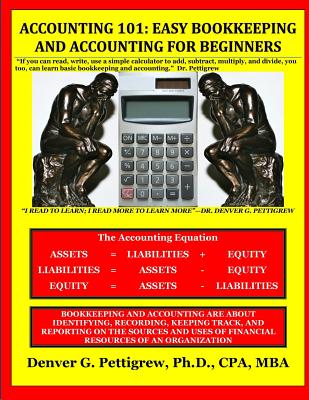The material in Accounting 101: Easy Accounting and Bookkeeping for Beginners, is based on a simple framework for teaching and learning accounting and bookkeeping, using activities related to the elements of a Simple Combined Chart of Accounting and Trial Balance shown throughout the book. Beginners tend to get overwhelmed at the number of concepts and principles to be learned in accounting textbooks and lose sight of the main reasons for each chapter. Therefore, a reminder, "What is the purpose of this chapter?" is included in the first few lines of each chapter so readers can see the purpose (of each chapter).Accountants and bookkeepers use a systematic step-by-step set of activities to record, update, and report on the financial activities of an organization, maintained in three main sets of financial records: (1) Journals (JEs), to initially record financial or economic business transactions; (2) General Ledger accounts (GL), to post the journal entries to the appropriate accounts; and (3) Financial statements including the balance sheet, income statement, statement of retained earnings, statement of changes in the owners' equity account, and statement of cash flows, to summarize the GL accounts and report on the operations and financial health of the organization. The terms firm, company, and organization are used interchangeably throughout the book. An easy step-by-step guide filled with examples ideal for beginners, including high-school seniors, new college students and other learners. Illustrations include: (a) The Chart of Accounts, General Journals, Special Journals, General Ledger Accounts, and Trial Balance.(b) Income Statement, Statement of Retained Earnings, Balance Sheet, and Statement of Changes in Owner's Equity.(c) Payroll & Payroll Accounting including publicly available IRS payroll forms from IRS.gov website, Cash Flows Statements, Bank Reconciliation, and Financial Ratios and Trend Analyses.(d) Can be used as a supplemental resource to introductory college accounting textbooks. As the famous far-eastern saying goes "a picture is worth ten thousand words," many examples, diagrams, and figures are used in the book to demonstrate simple accounting and bookkeeping concepts and practices used in the accounting and bookkeeping profession in the real world (Barnard, 1927). Creating journal transactions in a manual accounting system is emphasized to get readers familiar with the double-entry concept of accounting and the accounting equation,




